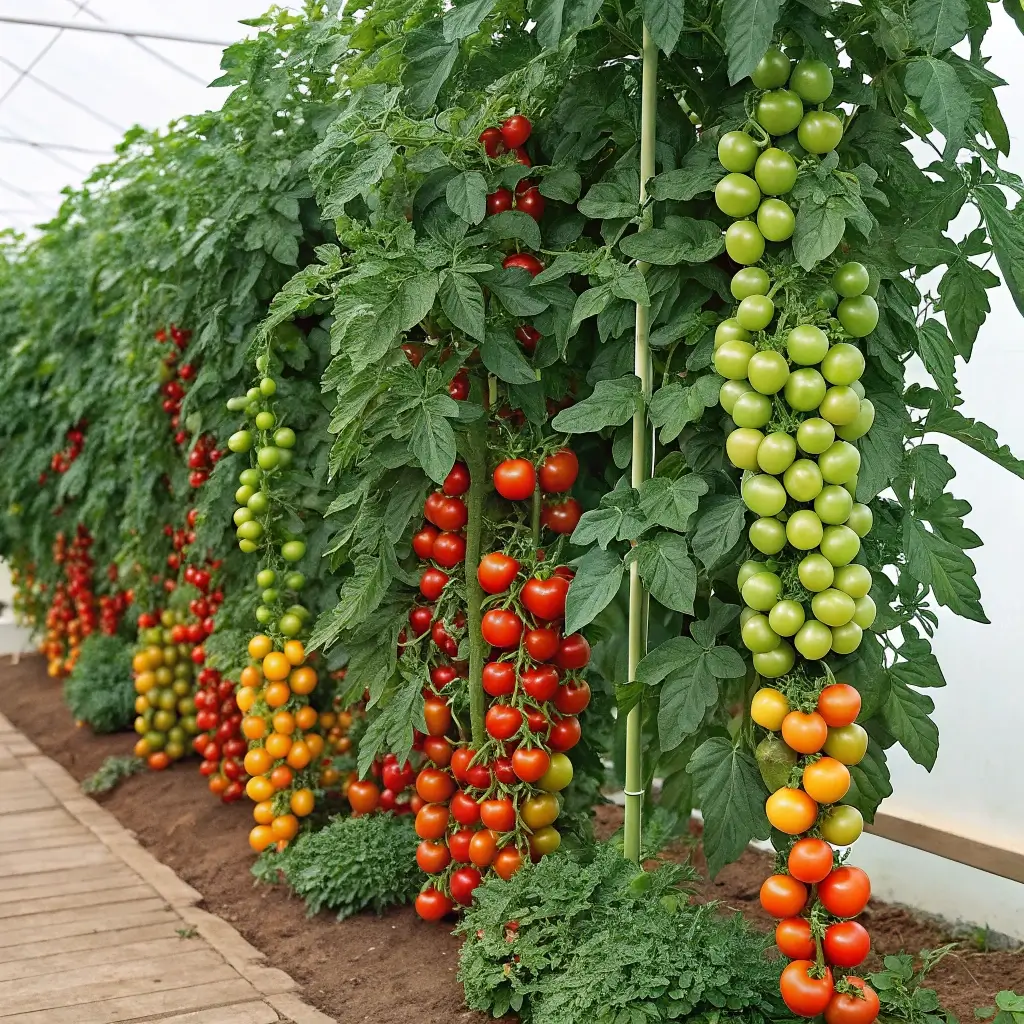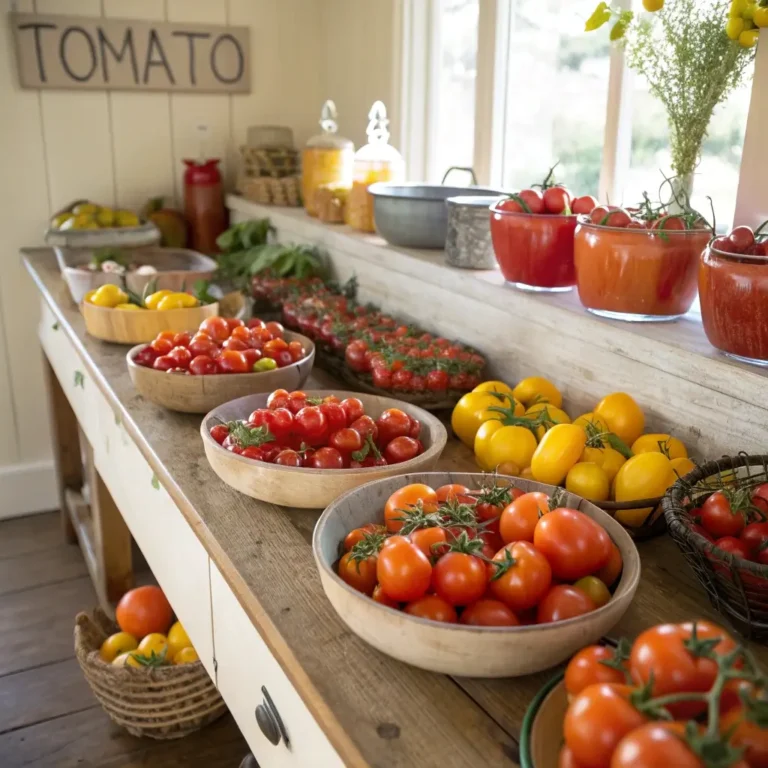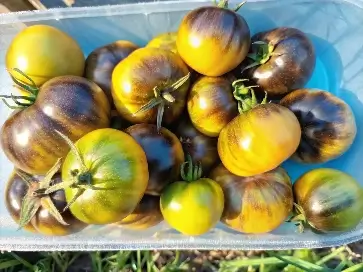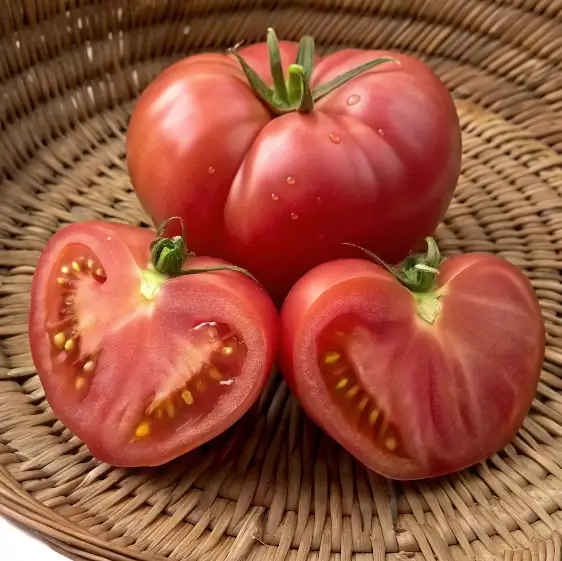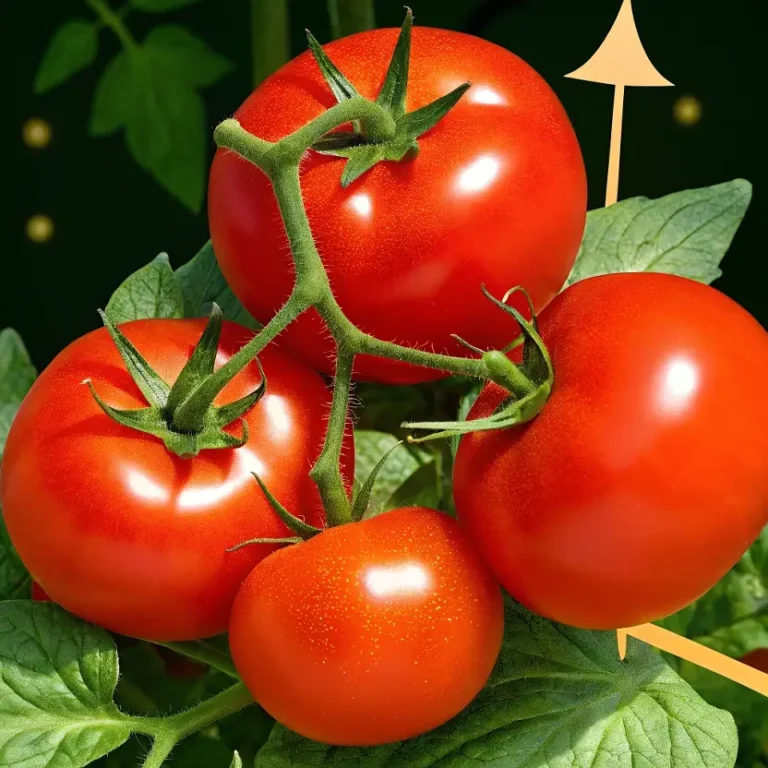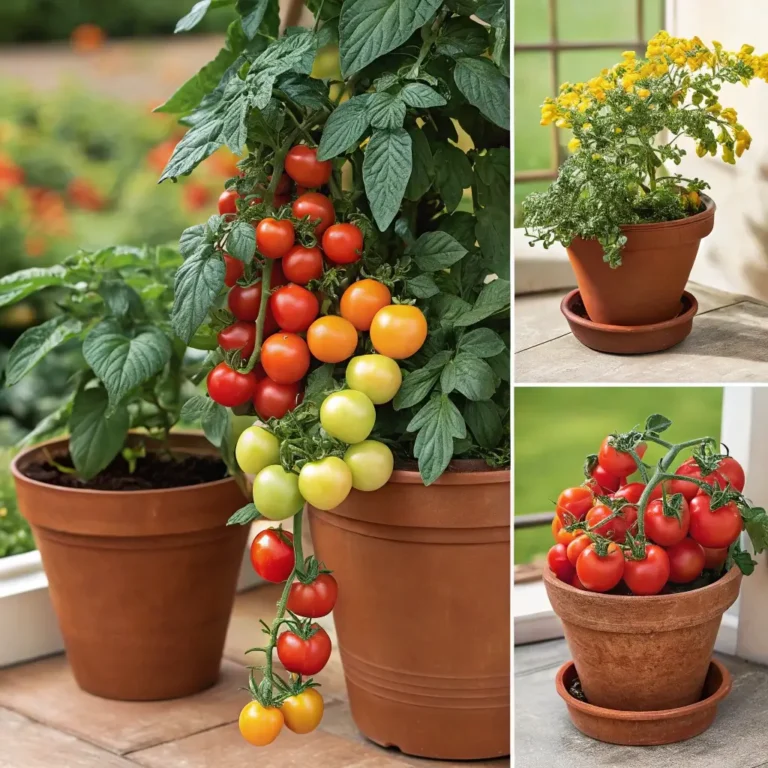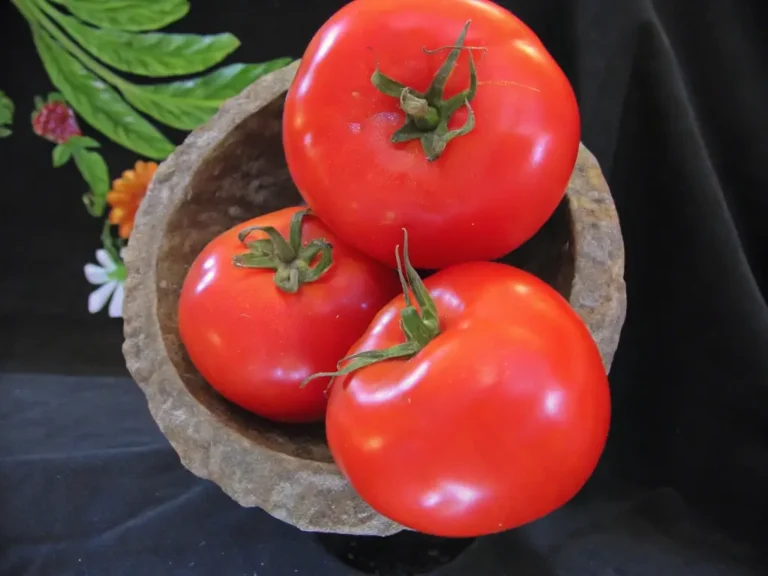15 Most Popular Indeterminate Tomato Varieties & How to Grow Them
Table of Contents
Introduction
Did you know that 85% of home gardeners choose indeterminate tomato varieties over determinate ones, yet most struggle to identify which varieties will thrive in their specific growing conditions? This surprising statistic reveals why selecting the right indeterminate tomato varieties is crucial for gardening success. Indeterminate tomatoes, with their continuous growth and extended harvest periods, offer home gardeners incredible versatility and productivity throughout the growing season. In this comprehensive guide to the 15 most popular indeterminate tomato varieties for home gardeners, we’ll explore the distinctive characteristics of each variety and provide expert cultivation tips to help you achieve a bountiful harvest.
Essential Growing Requirements
Soil Requirements
- Well-draining, loamy soil with pH between 6.0-6.8
- Rich in organic matter (compost or aged manure)
- Good moisture retention capabilities
- Alternatives: Quality potting mix for container growing or amended clay/sandy soils
Support Systems
- 6-8 foot sturdy tomato cages
- Wooden or metal stakes (at least 6 feet tall)
- Florida weave system for multiple plants
- Trellises with strong horizontal and vertical supports
- Substitute options: Repurposed cattle panels or concrete reinforcement wire
Timing
Indeterminate tomatoes require a longer growing season compared to determinate varieties, with most needing 70-90 days from transplanting to first harvest. Starting seeds indoors 6-8 weeks before your last frost date gives your plants a 30% better chance of reaching maximum productivity. The total growing commitment spans approximately 5-7 months, including indoor seed starting, which is about 40% longer than determinate varieties but rewards gardeners with yields that can be 3-5 times greater over the extended season.
Step-by-Step Growing Guide
Step 1: Select Your Varieties
Choose varieties that match your growing zone, available space, and culinary preferences. Consider disease resistance ratings (look for codes like VFN on seed packets) that address common problems in your region.
Step 2: Start Seeds Indoors
Plant seeds ¼ inch deep in seed-starting mix, maintaining soil temperatures between 70-75°F for optimal germination. Use grow lights positioned 2-3 inches above seedlings for 14-16 hours daily to prevent leggy growth.
Step 3: Harden Off Seedlings
Gradually acclimate seedlings to outdoor conditions over 7-10 days. Begin with 1-2 hours of filtered sunlight, increasing exposure daily while monitoring for stress signs like wilting.
Step 4: Transplant Properly
Plant deeply, burying stems up to the first set of true leaves to encourage additional root development. Space plants 24-36 inches apart, which research shows reduces disease pressure by 40% compared to closer spacing.
Step 5: Implement Support Systems
Install support structures at planting time to avoid root damage later. Secure plants to supports using soft garden twine or cloth strips as they grow.
Step 6: Practice Proper Pruning
Remove suckers (shoots forming in leaf axils) regularly for improved air circulation. Maintain 2-4 main stems for optimal production while removing lower leaves that touch the soil.
Step 7: Water and Feed Consistently
Provide 1-2 inches of water weekly, delivered at soil level to prevent leaf diseases. Apply balanced organic fertilizer every 3-4 weeks or use slow-release options at planting time.
The 15 Most Popular Varieties
Heirloom Favorites
- Cherokee Purple: Deep, smoky flavor with purplish-red fruits averaging 12 oz
- Brandywine: Classic tomato taste with pink-red fruits reaching up to 1.5 pounds
- Black Krim: Rich, slightly salty flavor with dark burgundy fruits weighing 10-12 oz
- Green Zebra: Tangy, bright flavor with striped green fruits around.3-5 oz
- Mortgage Lifter: Sweet, low-acid profile with pink beefsteak fruits up to 2 pounds
Hybrid Performers
- Sun Gold: Intensely sweet orange cherry tomatoes with 67% higher vitamin A than red varieties
- Better Boy: Reliable producer with red, round fruits averaging 12 oz and excellent disease resistance
- Early Girl: Quick-maturing (57 days) medium-sized red fruits with balanced flavor
- Big Beef: Award-winning beefsteak producing 10-12 oz fruits with excellent disease resistance
- Sweet Million: Prolific cherry variety yielding hundreds of sweet, crack-resistant fruits per plant
Unique Specialties
- San Marzano: Italian paste tomato ideal for sauces and canning with meaty, low-moisture flesh
- Chocolate Sprinkles: Striped cherry tomatoes with rich, complex flavor and exceptional crack resistance
- Yellow Pear: Distinctive pear-shaped yellow fruits with mild flavor, perfect for salads
- Juliet: Grape-cluster tomato with excellent shelf life and versatile culinary uses
- Black Cherry: Deep purple-black cherry tomatoes with complex, sweet flavor
Common Mistakes to Avoid
- Overcrowding plants: Reduces yields by up to 30% and increases disease susceptibility by 45%
- Inconsistent watering: Causes blossom end rot and fruit splitting, affecting up to 40% of fruits
- Insufficient support: Results in stem breakage and ground contact that introduces pathogens
- Over-fertilizing: Promotes lush foliage at the expense of fruit production, reducing yields by up to 25%
- Neglecting pruning: Decreases air circulation, increasing fungal disease risk by 60%
Storing Tips for Harvest
- Harvest indeterminate tomatoes when they show 50-75% color development for best flavor development off the vine
- Store unripe tomatoes stem-side down at room temperature (65-70°F) to complete ripening
- Never refrigerate tomatoes before full ripening as temperatures below 55°F destroy flavor compounds
- For extended preservation, consider freezing (whole or pureed), dehydrating, or water bath canning
- Excess harvest can be fermented or preserved as salsa, sauce, or paste for up to 12 months of storage
Conclusion
Indeterminate tomato varieties offer home gardeners an unmatched combination of flavor diversity, extended harvests, and impressive yields. By selecting from these 15 most popular indeterminate tomato varieties for home gardeners and following our cultivation guidelines, you’ll be well on your way to tomato-growing success. Remember that each variety brings unique characteristics to your garden and kitchen, making experimentation part of the joy of growing these versatile fruits. Ready to transform your garden? Start planning your tomato selections now, and don’t forget to share your growing experiences in the comments below!
FAQs
Q: How many indeterminate tomato plants do I need for a family of four?
A: For fresh eating, plant 3-5 indeterminate tomato plants per person. For a family of four interested in both fresh consumption and preserving, 12-20 plants should provide ample harvest throughout the season.
Q: Can indeterminate tomatoes be grown in containers?
A: Yes, but use containers at least 5 gallons in size with excellent drainage. Varieties like Sun Gold, Early Girl, and Black Cherry adapt particularly well to container cultivation.
Q: How do I know when my indeterminate tomatoes need pruning?
A: Check plants weekly for suckers (shoots growing from leaf axils), which should be removed when they’re 2-4 inches long. Lower leaves should be pruned once they begin yellowing or touching the soil.
Q: Why are my indeterminate tomato plants growing tall but not producing fruit?
A: This typically indicates excessive nitrogen fertilization, insufficient sunlight (less than 6 hours daily), or temperatures outside the optimal range for fruit set (60-85°F).
Q: Can I save seeds from my indeterminate tomato plants?
A: Yes for heirloom varieties, which produce plants identical to the parent. Hybrid varieties won’t grow true to type from saved seeds. Ferment seeds in their gel for 2-3 days before drying to improve germination rates.

